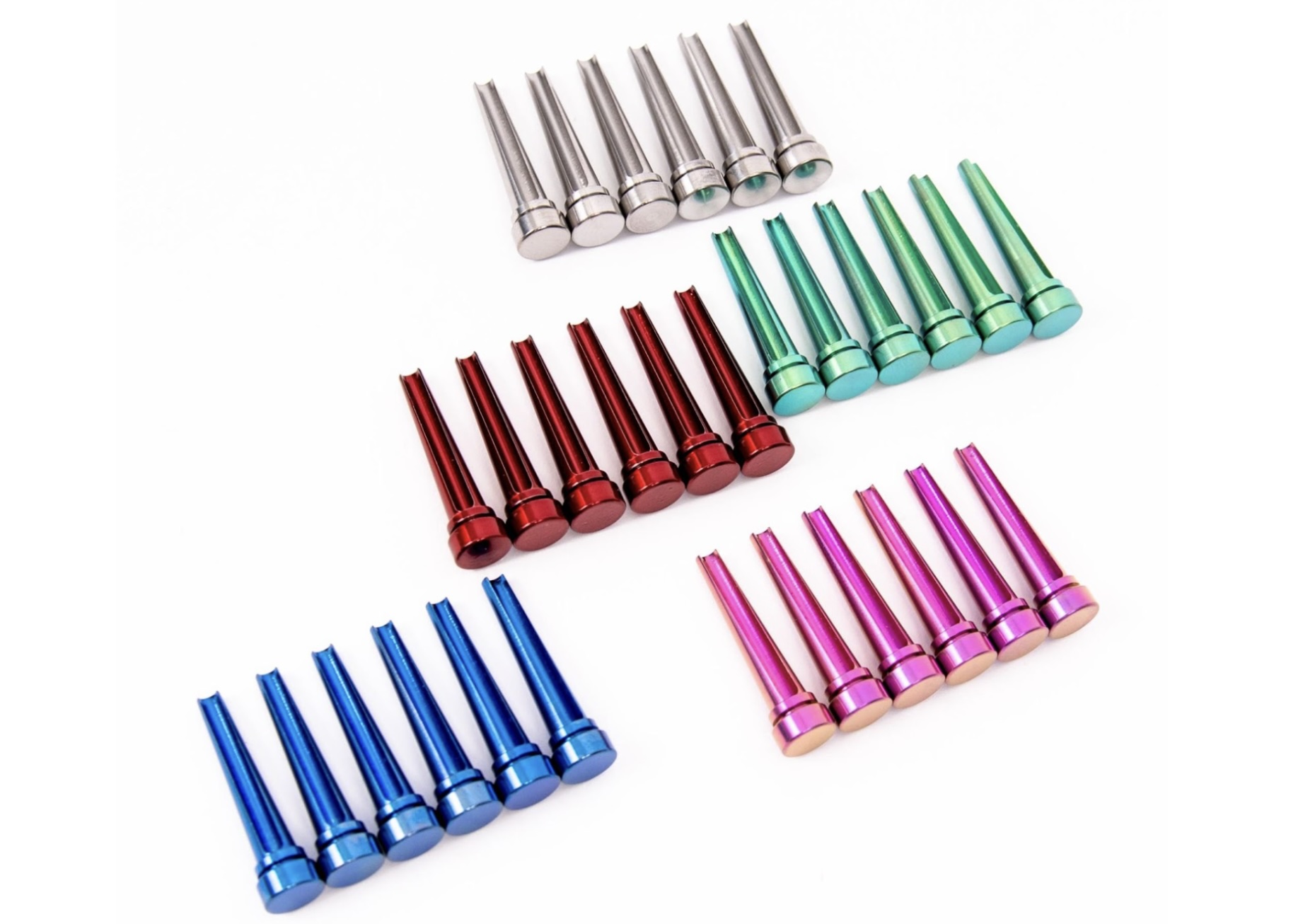Kick up your acoustic tone with FU-Tone’s high-performance titanium and brass bridge pins
The first name in guitar hardware upgrades has a little something special for all you unplugged players, too


For more information on FU-Tone’s acoustic bridge pins, head to FU-Tone.com.
FU-Tone head Adam Reiver has quite literally made a career out of pushing guitar tone into the stratosphere with some of the most inventive and ingenious hardware upgrades on the market. Which has made him one of our favorite guests to welcome into the Guitar World studios. But this time Adam has come prepared to show us something a little different – adding upgrades to an acoustic guitar.
Adam has joined Guitar World Tech Editor Paul Riario to swap out some plastic acoustic bridge pins on two models – an affordably-priced Epiphone Dave Navarro Signature “Jane” and a more pricey vintage Gibson J-100 – with FU-Tone’s high-performance acoustic bridge pins, to show how easy and effectively FU-Tone can boost sustain, clarity, definition, note separation and, well, tone, on an unplugged instrument.
“You may think this is a very minute, maybe insignificant upgrade,” Paul warns, “but as someone who has done this before I can tell you there is an amazing difference in tone. And that’s why we’re here.”

As for why Adam thinks swapping out the pins makes such a difference? “It’s the weak link in the vibration chain,” he says. “You have a great piece of wood with a three-cent piece of plastic anchoring the string. So the vibration comes down the string and hits that plastic and just dies. Whereas titanium or brass takes that vibration and pushes it back out into the guitar and into the wood. So you’re hearing more sustain, more clarity, more resonance, more everything. More of the guitar. I don’t care if it’s a $200 acoustic or a $2,500 acoustic. The result is the same.”
To demonstrate, they begin with the Epiphone, which receives a set of FU-Tone titanium bridge pins. First, Paul demos the guitar with the plastic pins in place, before Adam swaps them out for FU-Tone’s titanium. He uses silver pins, but they’re also available in other colors, including blue, red, green and purple. “So if you want to get super fancy on your acoustic, throw some of those puppies on there,” Paul says.
After making the swap – and quickly, we might add – Paul takes the Epi for a spin. “That is a serious, serious upgrade right there,” he says. “Everything is more focused. The dynamics are all there. And fingerpicking sounds great. You can hear the bass, it’s really pronounced.”
And not only does the Epiphone sound great, but the titanium pins also “elevate the look of the guitar,” Paul continues. “It looks cool with silver pins on the black finish.”
Next, Paul and Adam take on the Gibson, which they upgrade with a set of FU-Tone brass pins.
“The difference in tone is just dramatic,” Paul says afterward. “Volume, dynamics and note separation are all there.”
If you don’t believe Paul (and why wouldn’t you?), you can also ask Heart’s Nancy Wilson, Def Leppard’s Phil Collen and Vivian Campbell and former Eagles great Don Felder, all of whom are dedicated FU-Tone users on their acoustics.
Or, just check out the demo video above, and hear – and see – for yourself.
For more information on FU-Tone’s acoustic bridge pins, head to FU-Tone.com.
Get The Pick Newsletter
All the latest guitar news, interviews, lessons, reviews, deals and more, direct to your inbox!
Since 1980, Guitar World has been the ultimate resource for guitarists. Whether you want to learn the techniques employed by your guitar heroes, read about their latest projects or simply need to know which guitar is the right one to buy, Guitar World is the place to look.

